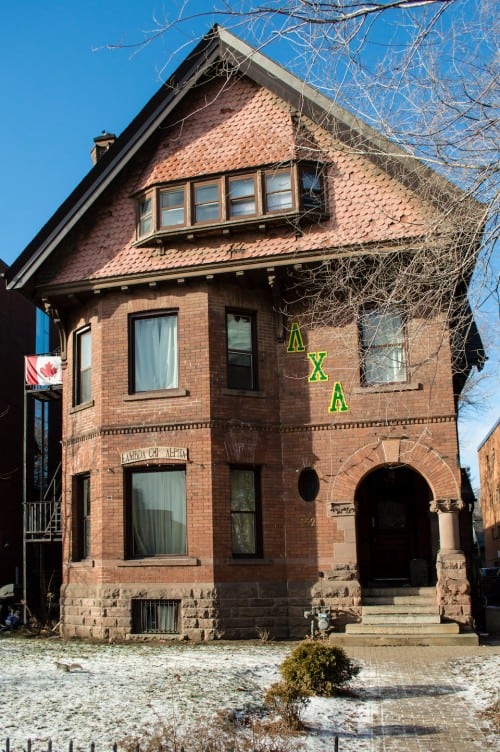These days, ‘frat boy’ is a term often associated with Sperry’s, Polo or Ray-Bans, and they’re often characterized as being rowdy or obnoxious. For nearly two centuries, however, many of U of T’s fraternity men have made meaningful contributions to nearly every area of social development.
The Varsity looked at some of the artists to emerge from U of T’s fraternities, whose works are noted for their enduring influence and the forming of a uniquely Canadian artistic output.
Lieutenant Colonel John McCrae (Zeta Psi, Theta Xi chapter 1894):
Founded in 1879, Zeta Psi is the original fraternity at U of T. Located at the northwest corner of St George and Prince Albert, male students of distinguished talents were drawn to this community due in part to its reputation for cultivating leadership. One of those men was a student at University College who had won a scholarship to attend U of T, John McCrae.
McCrae excelled in biology, received his bachelor of medicine in 1898, and finally became a doctor of medicine in 1910. It is not his aptitude for medicine that McCrae is remembered for, but rather his poetic and literary expertise. “His poems, all admirable in their workmanship and concentration, distinctively original in structure and in form, educational in their rigid economy of words and finely displayed appreciation of word values, strong, true-ringing and purposeful,” describes a 1918 article published in The Toronto News. McCrae would become a casualty of war. He died on January 28, 1918, but his legacy lives on through his poem “In Flanders Fields.”
Lawren Harris (Delta Kappa Epsilon, Alpha Phi chapter 1904):
Lawren Harris attended U of T between 1903 and 1904. During his time here, he became a member of Delta Kappa Epsilon, a fraternity founded in 1898.
His artistic talents were quickly recognized by a professor who suggested he may do well to study art in Europe. After travelling until 1910, he returned to Toronto and spent much of his time studying and sketching various neighbourhoods in the city.
The Ontario Heritage Trust notes that he had a particular fascination with landscapes and was influenced by “urban realism, landscape regionalism, and theosophy, a transcendental, mystical school of thought” as well as a desire for “developing a distinctly Canadian art.” In the years following, he continued to innovate and experiment, eventually founding the Group of Seven.
The artist collective travelled all over the country depicting Canadian landscapes through a modernist lens. On his artistic philosophy, Harris stated, “with us in Canada, painting is the only art that so far has achieved a clear native expression and so the forming of distinctive attitude, the creative direction of the genius of our people and their higher aspirations are to be detected within it.”
Stephen Leacock (Zeta Psi, Theta Xi chapter 1891):
Another brother of Zeta Psi, Stephen Leacock was integral to the early development of a Canadian literary voice. He studied modern languages, and received his BA in 1891. He had published several scholarly works and was well known in academic circles. It wasn’t until Leacock began to write fiction that he would compose his most famous work. Likely set in the town of Orillia, just north of Toronto, Leacock wrote Sunshine Sketches of a Little Town in 1912. The collection of short stories features reoccurring characters living in the fictional Canadian town of Mariposa. Leacock chronicles the humorous and sometimes outrageous exploits of its citizens. The work masterfully captures the essence of the archetypal Canadian town and the colourful characters that reside within it. It became one of the first works to satirize the subject and has since become a celebrated work of Canadian fiction. Even after his success, and having spent 36 years teaching at McGill, Leacock’s fondness for his alma mater never diminished.


